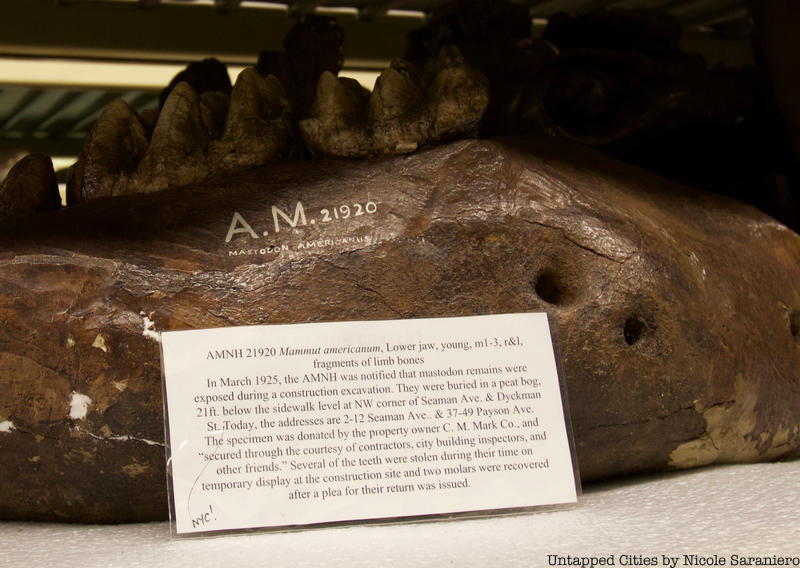5. One of the most famous mastodon fossils in New York City was found buried beneath the streets of Inwood

In 1925, at the intersection of Seamen Avenue and Cumming Street, a brand new apartment complex was set to be built when construction workers came upon the lower jaw and teeth of a young Mastodon (Mammut americanum) — an extinct species that lived in North America along the coast until around 10,000 years ago at the end of the Pleistocene Epoch. Immediately after the discovery, Dr. CC Mook from the American Museum of Natural History was dispatched to collect the fossils. However, before arriving, Inwood locals took off with the remains. As reported in The Sun on March 25, 1925, construction workers were showing off the fossils when a local milkman swiped them and ran away, leaving only three teeth left by the time Mook reached the scene. Later, two of these teeth were reported to have been pickpocketed from Mook as he made his way to his car from the construction site. Today, most of these stolen fossils have been recovered and returned to the Museum of Natural History
Besides the Inwood mastodon, other remnants of these prehistoric creatures have been found in various locations throughout the New York area. In 1705 a Dutch farmer unearthed the first mastodon fossil in Claverack, New York, a small town 100 miles north of Manhattan. After the farmer reportedly sold the mastodon tooth in exchange for a glass of rum, it eventually moved into the hands of the governor of New York and later the King of England. Moreover, given that the fossil was found around 100 years before the discovery of dinosaurs, many individuals believed that the tooth actually belonged to one of the giants in the biblical book of Genesis. In New York City, a piece of a tusk was also found during the digging of the Harlem River Canal.





